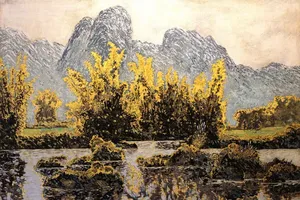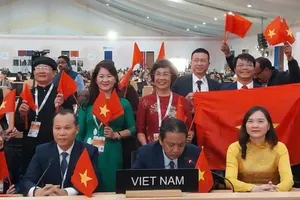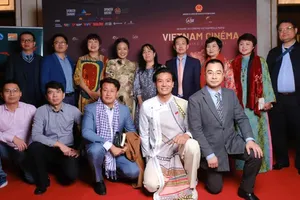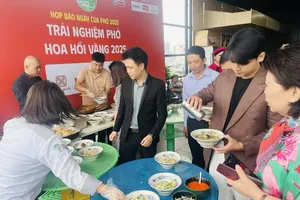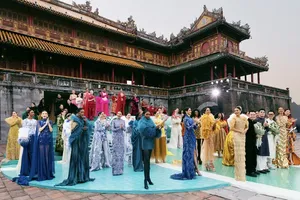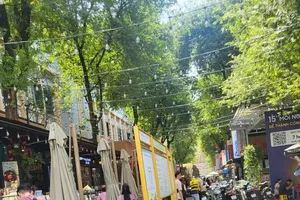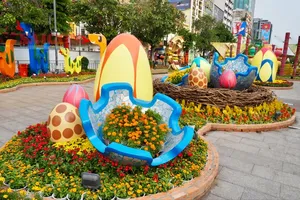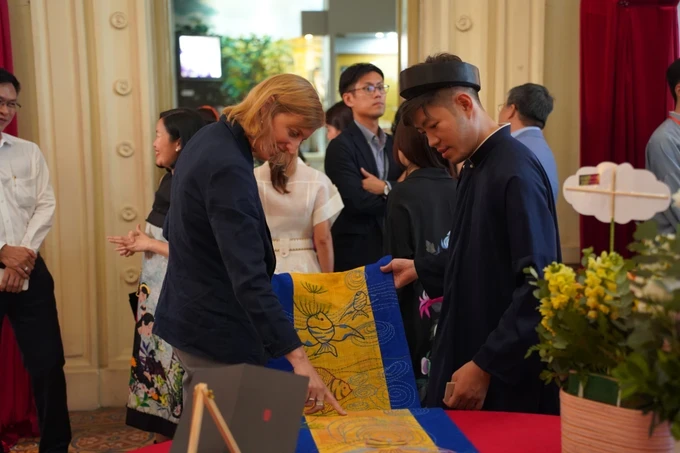
Industry 4.0 has brought about great benefits to the operation of various traditional handicrafts villages; yet on the downside, these communities are facing a lack of input materials and human resources while the competition against imported goods has become fiercer. These might result in craft skill loss among the next generations.
Aware of this, HCMC Museum is holding an exhibition themed ‘Traditional crafts and Artistic Works of Xeo Chu Artist’ until February 29, 2024 in order to use a modern way to preserve and promote the values of craft products created by those villages.
The two focuses of this exhibition are ‘traditional handicraft village’ at the main lounge of the museum and ‘contemporary paintings of Xeo Chu Artist’ at the City Exhibition Hall (near the entrance of 92 Le Thanh Ton Street, District 1).
The first section displays a colorful and comprehensive picture of famous traditional handicraft villages in Vietnam like mother-of-pearl inlay, lacquer, embroidery, silk fabric weaving, and Dong Ho paintings. Through these illustrations, visitors can clearly understand different steps to produce those specific craft works and the reason why they are highly appreciated among the arts community as well as the market.
In the second section, the paintings of Xeo Chu Artist (born in 2007) successfully show his love for the nature (particularly white pear flowers), for his fatherland and the people there. These artistic works, which are a combination of modern painting skills and traditional materials, are supposed to help visitors appreciate the beauty of arts and to introduce a new way to get in touch with cultural heritages.
In the exhibition is also a hand-drawing stamp collection from Nguyen Thi Thu Suong (the mother of Xeo Chu Artist). She shared that during her 20 years working with paintings and collections, she has always yearned to introduce to tourists the national identity and cultural heritages via traditional handicraft works.
Artisan Nguyen Dang Tan, who is among the 21st generation of a family specializing in Dong Ho painting making, commented that Dong Ho paintings do not follow any arts principles, so each work is a unique one, and is hard to copy. However, this special characteristic makes it a real challenge when there is a need to mass produce a piece with the same quality. This is a huge concern among artisans.
The combination of wisdom, skills, and love for the fatherland of the ancestors have resulted in renowned traditional handicraft villages as a great contribution to the cultural heritages of the country. Such exhibitions like this are a necessity to effectively preserve those spirits and values for the next generations and to successfully combine the traditional and modern artistic features into contemporary art works in Vietnam.
Vietnam has already submitted a proposal to UNESCO for the recognition of Dong Ho paintings as an intangible cultural heritage that needs preservation. Products from traditional handicraft villages like Do paper, Dong Ho paintings, silk fabric, traditional embroidery works are wonderful gifts to international friends and an effective way for the Vietnamese to introduce their cultural heritage to the world.
Former Special Envoy of the Prime Minister on UNESCO Pham Sanh Chau

